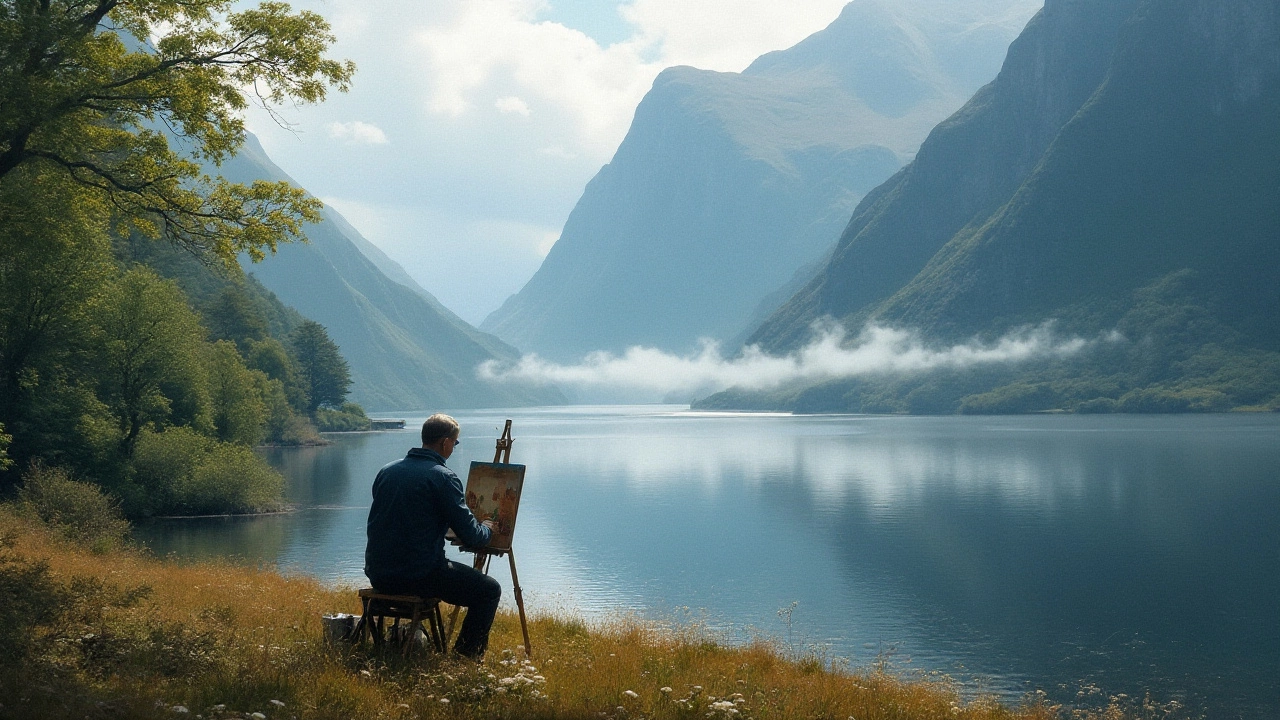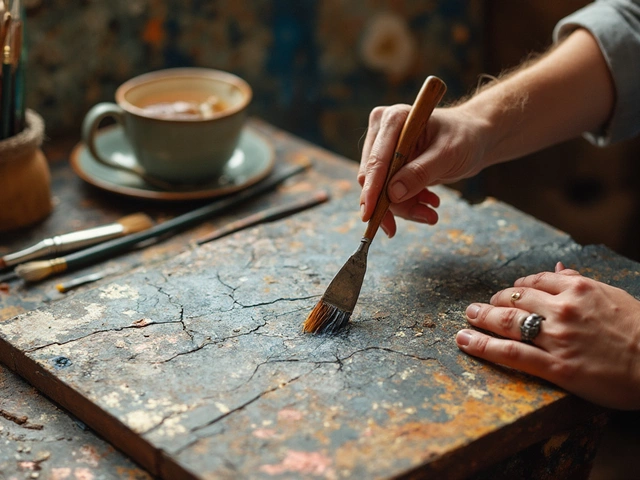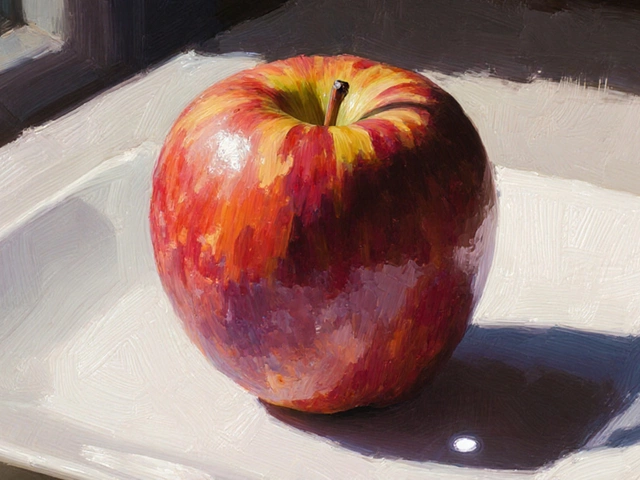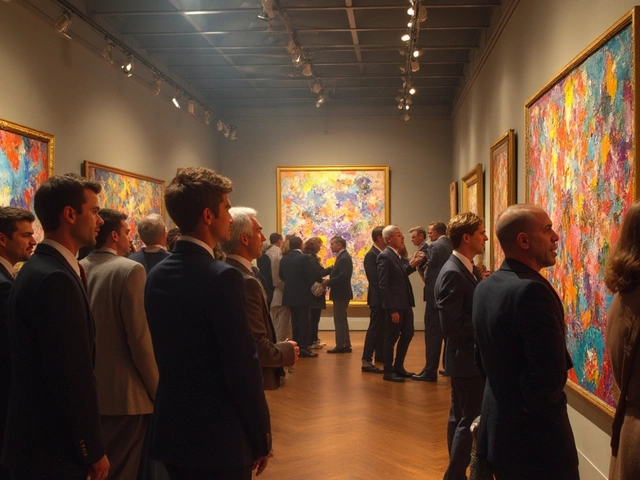When one gazes upon a landscape painting, there's a world of creativity and skill lying within each brushstroke. Artists have long sought not just to depict a scene, but to capture the emotional resonance of nature itself. To do this, an understanding of three fundamental concepts is crucial: composition, perspective, and color.
Each of these elements plays a pivotal role in transforming a simple view into an evocative piece of art. The subtle balance within these concepts allows painters to guide the viewer’s eye and mood through the landscape, creating a journey to be experienced from the canvas. Join me as we explore these captivating aspects of landscape painting that have inspired artists for generations.
- The Role of Composition in Landscape Painting
- Understanding Perspective and Depth
- Color Theory and Its Emotional Impact
- Techniques for Capturing Nature’s Essence
The Role of Composition in Landscape Painting
Composition in landscape painting isn't just about fitting elements onto a canvas; it's about orchestrating a visual symphony where every part plays a significant role. This concept acts as the backbone of art, guiding both the artist’s creativity and the viewer’s experience. In essence, composition is the deliberate arrangement of elements within a painting that dictates how a scene is understood. A well-composed landscape can lead the viewer through the scene, inviting them to feel the wind through the trees or the tranquility of a distant mountain. One cannot overstate the importance of the 'Rule of Thirds' in this context, an age-old guide that divides the canvas into nine equal segments. By placing focal points along these lines or at their intersections, artists can create tension, balance, or harmony in a painting.
The Magic of Balance
Finding balance is another vital element within composition, especially in nature art. Whether the scene embodies symmetry or intentional imbalance, balance affects the painting's emotional impact. Symmetrical landscapes often exude a sense of calmness and order, whereas asymmetrical compositions lend dynamism or a sense of natural spontaneity. Artists often use color and light to achieve this balance beyond just structure or elements. By ensuring the upper elements of a scene, such as the sky, echo aspects of the lower landscape, a seamless transition across the canvas is accomplished. Claude Monet, known for his enchanting landscape paintings, often played with light reflections in water to achieve this sense of balanced wonder.
"Color is my day-long obsession, joy, and torment," Monet famously stated, capturing the emotional intensity embedded in the balance of composition.
Leading the Eye
An effective composition leads the viewer's eye effortlessly throughout the painting. Paths, rivers, and even the subtle suggestion of a line through color or shadow can act as visual guides. Such methods are not random but planned, often with impressive insight into human perception. Artists might employ diagonal lines to impart movement or use converging lines that lead to a point of interest off-center in the composition, which in turn suggests depth. The use of scale also contributes; small foreground elements set against larger, more distant background forms enhance the perceived depth, creating a window into another world. This pathway for the gaze invites participation from the observer, turning a simple look into a sentimental journey across painted realms.
| Compositional Rule | Purpose |
|---|---|
| Rule of Thirds | Create interest and balance |
| Leading Lines | Guide viewer's focus |
| Symmetry and Asymmetry | Convey stability or dynamism |
Understanding and mastering composition can transform how an artist captures the beauty of landscapes. It's not just about depicting what they see but also about expressing the unseen emotions that the landscape evokes within them. The role of composition is to bridge this visual expression and emotional resonance, transforming the canvas into a story for every viewer to read and experience.
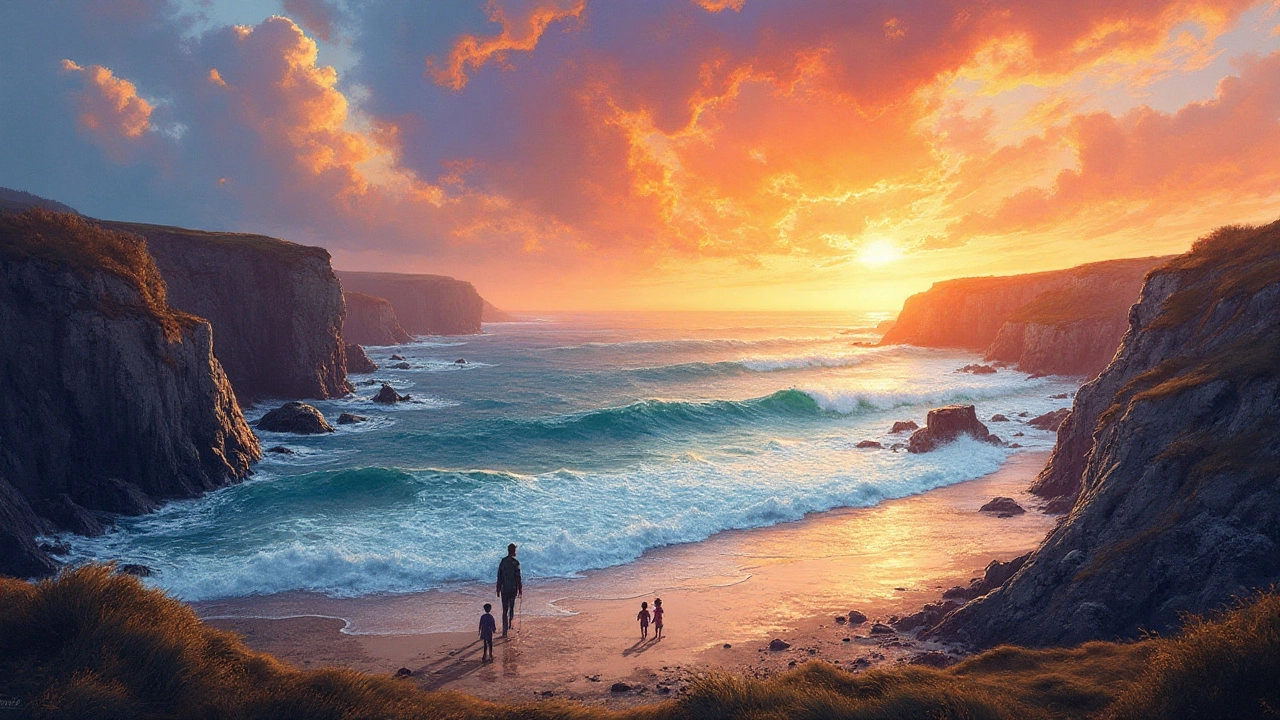
Understanding Perspective and Depth
When we confront the vastness of a natural vista or even the charming intimacy of a garden scene on canvas, it is the deft use of perspective and depth that bridges the gap between reality and art. These tools, honed over centuries, are essential for conveying the illusion of three dimensions on a two-dimensional plane. In the realm of landscape painting, the mastery of perspective is not merely a technical skill but an art in itself, lending both grandeur and subtlety to the spaces that artists depict.
The use of linear perspective became widely known during the Renaissance, with pioneers like Leonardo da Vinci exploring its potential. By applying rules that governed how objects appear smaller as they recede into space, artists could create a compelling sense of depth. The concept hinges on vanishing points, typically placed on the horizon, where parallel lines converge. This technique invites the viewer’s eye to travel into the painting, exploring each meticulous detail that's rendered with precision.
“Perspective is to painting what the bridle is to a horse, harnessing and guiding the composition” – noted the art historian Horst Woldemar Janson, underscoring its critical role.
Atmospheric or aerial perspective, another profound method, manipulates color and clarity to convey distance. Artists reduce the contrast and saturation of hues for elements perceived as distant. This method mirrors how our eyes perceive distant objects through layers of atmosphere — the hazy blues and lighter tones commonly associated with far-off mountains or fields. By cleverly applying these principles of color theory, artists not only create depth but infuse their work with the atmospheric quality of real landscapes.
There is also the aspect of plan perspective, which deals with different planes in a painting: foreground, middle ground, and background. By varying the scale and placement of objects in these parts, artists emphasize the spatial relationship between them. Details are crisply focused in the foreground, gradually becoming softer and less distinct towards the horizon. Such techniques, when applied thoughtfully, enhance the feeling of immersion, capturing the panorama as well as intimate specifics.
In practice, perfecting the marriage of perspective and depth takes not only understanding but also intuition. While technology today offers tools that aid in visualizing these perspectives, the timeless teachings from masters who relied solely on eye and experience remain invaluable. As burgeoning artists experiment with these concepts, they may keep in mind the wisdom of art critic John Ruskin:
“The essence of a landscape is its eternal repose; that all liveliness is in the sky, and the sky only.”By nurturing this balance, one captures the endless allure of the outdoors on the canvas, inviting endless exploration by those who behold it.
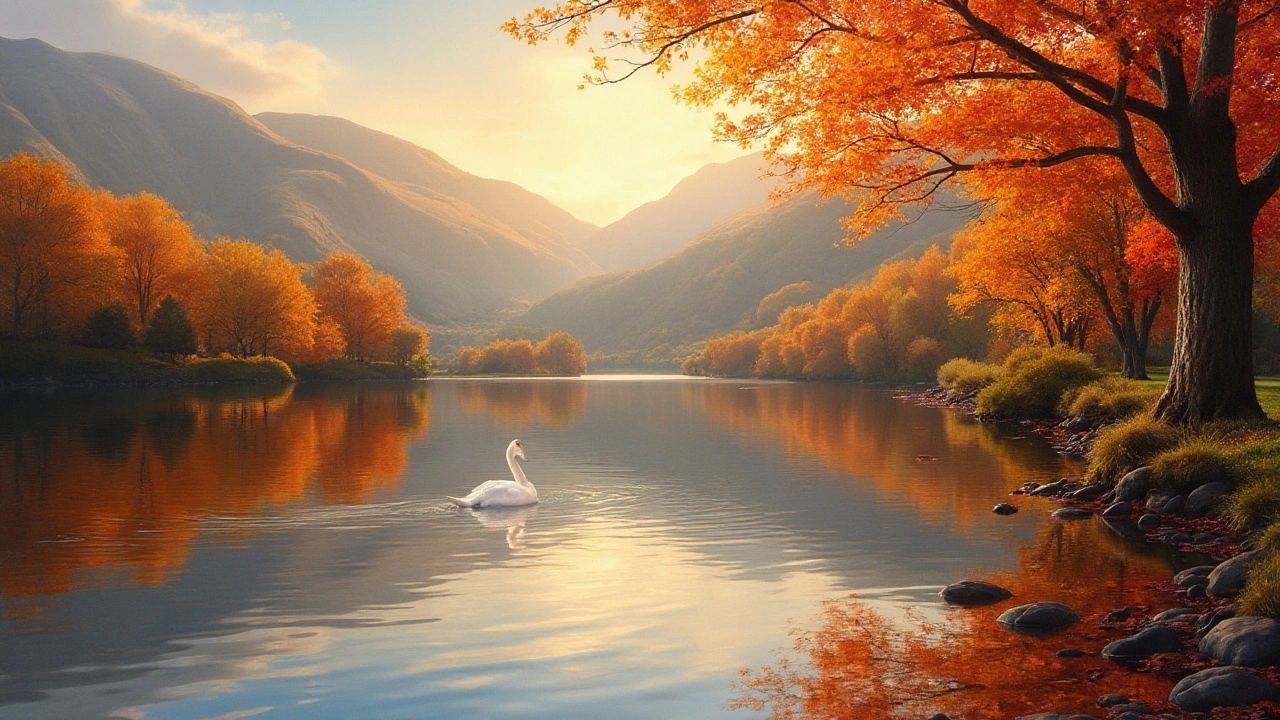
Color Theory and Its Emotional Impact
The transformative power of color in landscape painting is undeniable. It’s not just about capturing the various hues seen in nature; it's about using those hues to convey a mood, a feeling, or even a memory. Understanding color theory allows artists to wield colors like a musician wields notes, crafting harmonies that resonate on an emotional level. Each color, with its own wavelength and energy, contributes to the narrative of the painting. For instance, blues and greens might suggest calmness and tranquility, evoking serene settings, while reds and oranges bring forth energy and drama, perhaps reminiscent of fiery sunsets.
Delving deeper, one can explore the concept of color temperature. Warm colors, such as yellows and reds, can appear advancing and active, suggesting warmth and hospitality. On the other hand, cool colors, like blues and purples, often appear to recede, providing a sense of distance and calm. This understanding helps in modeling light and shadow in art, ultimately defining the topography of the painting in a way that is both truthful and expressive. The interaction between these warm and cool colors also creates depth and perspective, making the landscape feel expansive and alive.
Renowned painter Vincent van Gogh once remarked, "Color in a picture is like enthusiasm in life."
Color doesn't only set the mood, it becomes the mood, deeply entwining the viewer’s emotions with the scenery depicted.Using this knowledge, landscape painters can choose palettes that mirror the emotional tone they wish to portray. You might find that a largely blue and gray palette communicates the stark beauty of a winter’s day, or that varied greens bring to life the lushness of a forest in springtime.
Exploring the symbolic meanings of colors can also add a layer of depth to artistic work. For centuries, different colors have been attributed with specific meanings. Yellow, for example, is often associated with joy and enlightenment, making it a popular choice to represent sunlit fields or the first light of dawn. Green, typically linked with growth and renewal, finds frequent representation in forested landscapes. Harnessing these associations, artists can create visual metaphors that are both subtle and powerful, prompting reflection or nostalgia in the viewer.
When applying color theory to landscape painting, consider how each color interacts with the light sources present in the composition. The way sunlight dapples might vary in intensity, even within the same scene, requiring an artist to be attentive to shifts in color and shadow. One essential technique is the use of complementary colors to create vibrant contrasts. For instance, placing a splash of orange against a blue sky not only highlights the orange but makes both colors more vivid. This technique can make elements of a landscape, like autumn leaves or a setting sun, truly pop, captivating the audience's attention.
Finally, many artists create color studies or sketches before committing to their final work. This allows them to test out palettes, explore interactions, and ensure the intended impact. By doing so, they can experiment without fear, refining their choices until the painting techniques express exactly what they intend. Thus, understanding and application of color theory can be a profound tool in landscape painting, unlocking the potential to deeply move viewers with vivid, meaningful imagery.
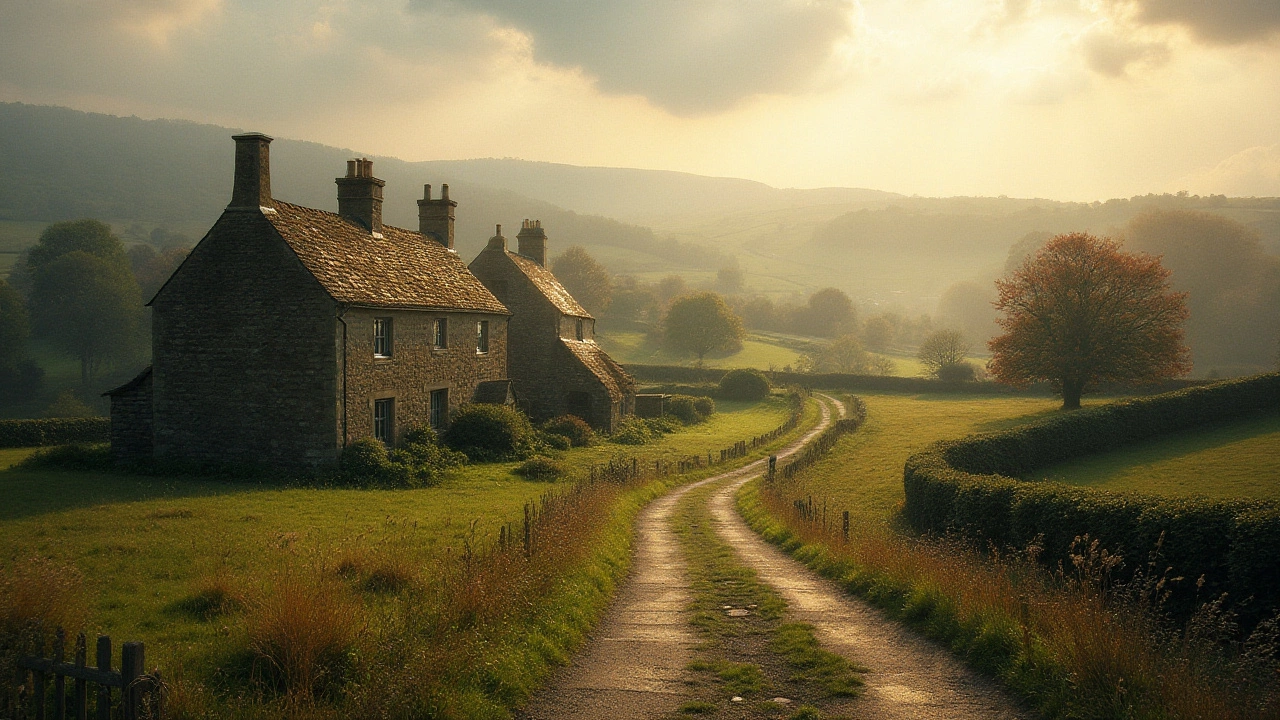
Techniques for Capturing Nature’s Essence
Immersing oneself in the splendor of nature can be a deeply inspiring experience, but transferring that to canvas requires a combination of skills and techniques honed over years. The art of landscape painting demands more than just technical prowess; it calls for an intimate connection with the environment, a sense of patience, and an ability to see beyond what initially meets the eye. To encapsulate the essence of nature, artists often spend time observing their subject matter in different lights and weather conditions, allowing them to understand its changing forms and colors. This attentiveness aids in capturing not just the physical attributes but the mood and spirit of the landscape as well.
One key technique involves plein air painting, where artists work outdoors in the natural environment they wish to depict. This method provides an authentic experience, enabling them to observe the fleeting quality of light and color that cannot be replicated solely from photographs. Painting plein air helps painters to develop a more immediate and intuitive response to their subject, often resulting in more lively and dynamic work. Creating preliminary sketches or studies in this setting can also be invaluable, as they become references for more detailed work later in the studio.
"A landscape painting is essentially an effort to make visible what is invisible – the dynamic and ever-changing play of light and atmosphere," said John Constable, a pioneering figure in landscape art.
For those seeking to capture the vibrancy and myriad hues of nature, mastery of color mixing is crucial. By understanding color theory, artists can create a palette that conveys the subtle shifts in the natural world. Many turn to a limited palette to force harmony within their work, carefully blending primary colors to attain the myriad shades found within landscapes. Incorporating techniques such as glazing can add depth and richness to the color, while impasto can bring texture and vibrancy to elements like foliage or rough terrain.
Employing Texture and Form
Texture plays a vital role in rendering the physicality of nature. To bring the tactile quality of landscapes to life, artists experiment with different painting materials and tools. Brushes of varying thicknesses, palette knives, and even unconventional tools like sponges or rags can present unique textures that mimic the roughness of a rocky surface or the softness of a grassy meadow. When combined with composition techniques such as controlling the focus and depth of field, texture can emphasize the three-dimensional feel of a scene.
Reflective surfaces, such as water, provide unique challenges and opportunities for landscape artists. Perfecting the depiction of reflections requires an understanding of how they distort as natural light changes, alongside an appreciation for how highlights and shadows interact upon these surfaces. Some artists prefer to use layering techniques to gradually build up these effects, capturing the ephemeral beauty of light on water. By investing time in studying and rendering these elements accurately, an artist can elevate their work and offer viewers a truly immersive experience.
